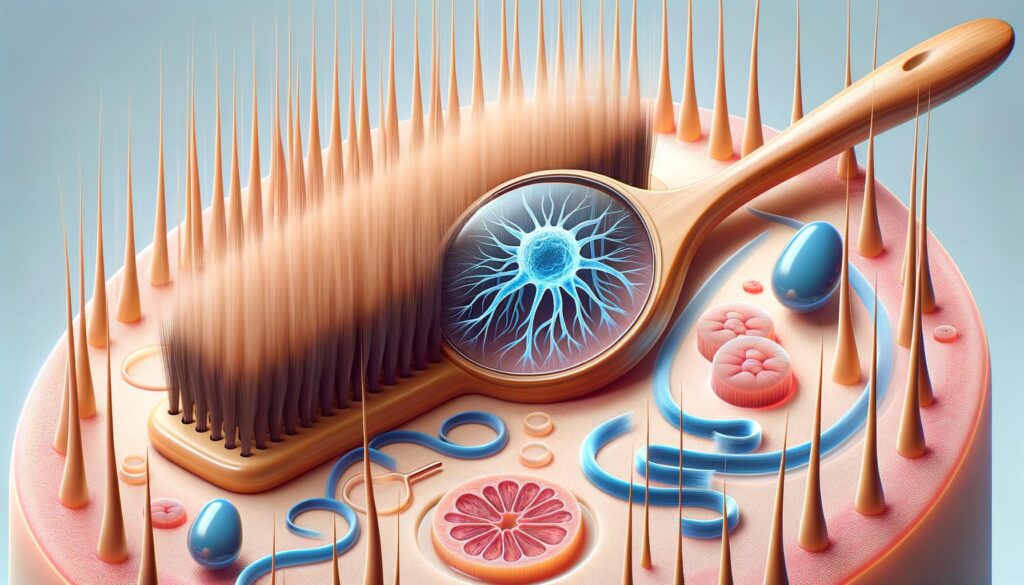Understanding the Causes of Hair Loss

Genetics and Hormonal Influences
Genetics play a crucial role in hair loss, particularly in patterned hair loss conditions such as male and female pattern baldness. This hereditary condition, also known as androgenetic alopecia, is influenced by the presence of certain hormones in the body. These hormones can impact the hair follicles, leading to their gradual shrinkage and resultant hair thinning. The role of dihydrotestosterone (DHT), a derivative of testosterone, is particularly noteworthy in this context. Over time, elevated levels of DHT can shorten the growth phase of hair, resulting in the hair becoming progressively thinner and finer.
Understanding genetic predisposition to hair loss involves acknowledging the contribution of family history. If hair loss is apparent in close relatives, there’s a likelihood it may also affect other family members. This doesn’t mean hair loss is predetermined but indicates a higher risk, urging early consideration and possible preventive actions.
Nutritional Deficiencies and Lifestyle Choices
Nutritional deficiencies can severely affect hair health. Diets lacking in essential nutrients, such as iron, protein, and certain vitamins, might lead to hair shedding. Iron deficiency anemia, often due to insufficient iron intake, can result in hair loss. Proteins are critical for hair structure, and a lack of sufficient protein can lead to thinning hair. Vitamins like Vitamin D and B-complex vitamins, including Biotin, are essential for robust hair growth.
Unhealthy lifestyle choices can exacerbate hair loss. High-stress levels, either from lifestyle or occupational demands, can trigger conditions like telogen effluvium, where significant hair shedding occurs. Other lifestyle factors include smoking, excessive alcohol consumption, and a lack of regular physical activity. Maintaining a well-balanced diet and a healthy lifestyle is fundamental not just for hair health but for overall well-being.
Medical Conditions Affecting Hair Health
Several medical conditions are directly linked to hair loss. Thyroid disorders, both hyperthyroidism and hypothyroidism, can lead to hair loss due to hormonal imbalances affecting the hair growth cycle. Autoimmune diseases, such as alopecia areata, cause the body’s immune system to mistakenly attack healthy hair follicles, leading to hair loss in patches. Scalp infections like ringworm can also contribute to this condition.
Specific medications, such as those used in chemotherapy or treatments for arthritis, depression, or heart problems, list hair loss as a potential side effect. It’s vital for individuals noticing sudden or severe hair loss to consult healthcare professionals to identify underlying health issues.
Environmental Factors and Hair Care Practices
Environmental factors, including pollution and exposure to harmful chemicals, can contribute to hair loss. Pollutants in the air can settle on the scalp and affect hair health, often leading to irritation and weakening of hair strands. While these effects might not be immediately apparent, continuous exposure can lead to cumulative damage over time.
Hair care practices also play a significant role. Frequent use of harsh hair care products, excessive styling with heat tools, and tight hairstyles that pull on the scalp, like ponytails and braids, can cause traction alopecia. Maintaining gentle hair care routines and protecting hair from environmental aggressors can mitigate these effects.
Age and Hair Loss
Aging naturally impacts hair health and growth. As individuals age, the rate of hair growth slows, and hair often becomes finer in texture. The natural aging process primarily affects the scalp’s ability to replace lost hair, leading to gradual thinning. While this is a natural part of aging, it can be distressing for many.
Accepting the changes that come with aging can be challenging, but understanding and managing expectations can help. Options such as hair thickening products and treatments are available to help manage the appearance of thinning hair effectively.
Conclusion
Understanding the causes of hair loss can empower individuals to recognize early signs and seek appropriate interventions. While genetics and hormonal factors are significant contributors, lifestyle choices, nutrition, health conditions, and environmental influences also play critical roles. Early consultation with a healthcare provider can help identify underlying causes and tailor interventions to each person’s unique needs. Although hair loss can be upsetting, knowing there are options and resources available to address these concerns can provide reassurance.
